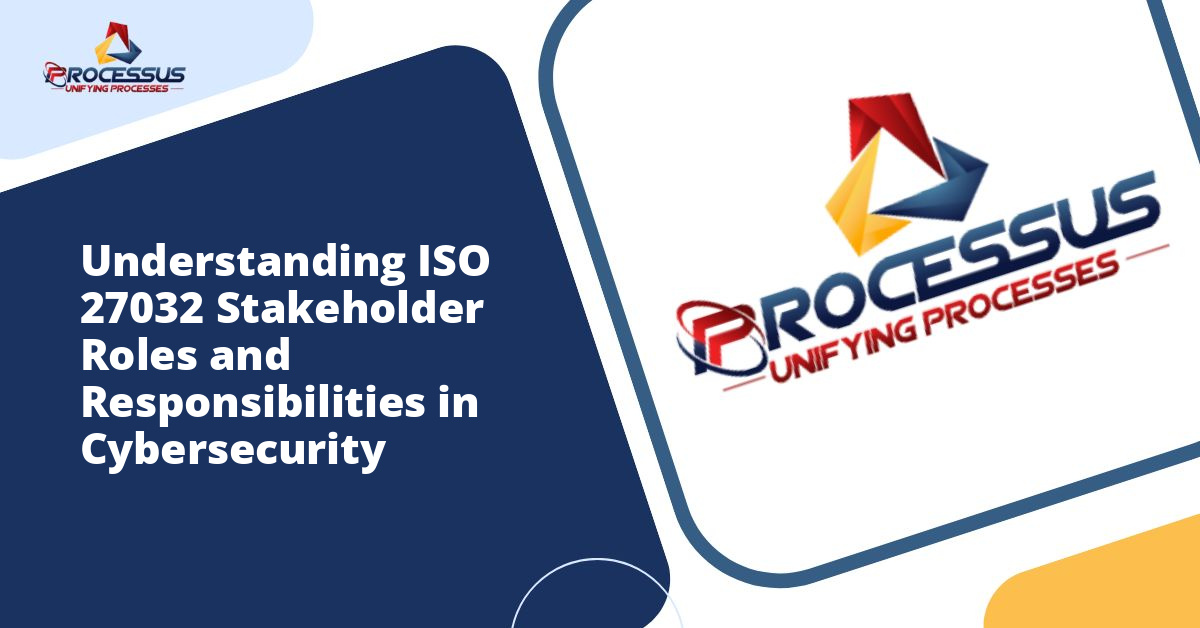In an increasingly interconnected world, the security of critical infrastructure has become a paramount concern for governments, organizations, and citizens alike. From power grids to water treatment facilities, healthcare systems to transportation networks, these essential services form the backbone of modern society. The International Organization for Standardization (ISO) recognized this pressing need and developed ISO 27032, a standard specifically designed to address cybersecurity challenges in cyberspace and protect critical infrastructure from evolving digital threats.
Understanding ISO 27032 and Its Significance
ISO 27032 represents a crucial framework titled “Information technology – Security techniques – Guidelines for cybersecurity.” Unlike other standards in the ISO 27000 family that focus primarily on information security management systems, ISO 27032 concentrates on the broader concept of cybersecurity within cyberspace. This distinction is vital because cyberspace encompasses not just information systems but also the entire digital ecosystem where individuals, organizations, and nations interact. You might also enjoy reading about Collaborative Cybersecurity with ISO 27032: Building a Unified Defense Against Digital Threats.
The standard provides comprehensive guidelines for improving the state of cybersecurity, drawing from existing standards while addressing gaps in coordinated security between different security domains. It establishes a framework for collaboration and cooperation between various stakeholders responsible for different aspects of cybersecurity, making it particularly relevant for critical infrastructure protection where multiple entities often share responsibility for security outcomes. You might also enjoy reading about ISO 27032 vs ISO 27001: Understanding Complementary Approaches to Cyber Defence.
Critical Infrastructure in the Digital Age
Critical infrastructure refers to the systems and assets, whether physical or virtual, so vital to society that their incapacitation or destruction would have a debilitating impact on security, national economic security, public health, or safety. These sectors typically include energy, water supply, telecommunications, financial services, healthcare, transportation, government services, and emergency services. You might also enjoy reading about ISO 27032 Guidelines for Cyberspace Security: A Complete Guide to Protecting Your Digital Assets.
The digital transformation of these sectors has brought tremendous benefits in terms of efficiency, cost savings, and improved services. However, this digitization has also expanded the attack surface and introduced new vulnerabilities. A successful cyberattack on critical infrastructure could result in catastrophic consequences, including loss of life, economic disruption, environmental damage, and erosion of public confidence in essential services.
The Growing Threat Landscape
Critical infrastructure faces an array of cyber threats that continue to evolve in sophistication and impact. Nation-state actors, organized criminal groups, terrorist organizations, and even insider threats pose significant risks to these vital systems. Recent years have witnessed several high-profile attacks on critical infrastructure, from ransomware attacks on healthcare facilities to sophisticated intrusions into energy sector networks.
The interconnected nature of modern infrastructure means that a vulnerability in one system can cascade across multiple sectors. For instance, an attack on the electrical grid could impact water treatment plants, telecommunications networks, and healthcare facilities simultaneously. This interdependency magnifies the potential impact of cyber incidents and underscores the need for comprehensive, coordinated security approaches.
Core Components of ISO 27032
ISO 27032 provides a holistic approach to cybersecurity by addressing several key components that are essential for protecting critical infrastructure. Understanding these components helps organizations develop robust security strategies tailored to their specific needs and risk profiles.
Stakeholder Coordination and Collaboration
One of the most distinctive features of ISO 27032 is its emphasis on stakeholder collaboration. The standard recognizes that cybersecurity in cyberspace requires coordination among various parties, including application security specialists, internet service providers, equipment manufacturers, end users, and security product vendors. For critical infrastructure, this coordination extends to government agencies, private sector operators, and international partners.
The framework encourages the establishment of information sharing mechanisms, joint incident response capabilities, and collaborative risk assessment processes. By breaking down silos between different security domains and organizations, ISO 27032 facilitates a more comprehensive and effective approach to protecting critical systems.
Risk Assessment and Management
ISO 27032 incorporates comprehensive risk assessment methodologies specifically adapted for the cyber domain. Organizations are guided to identify assets, assess vulnerabilities, evaluate threats, and determine the likelihood and impact of potential security incidents. For critical infrastructure, this process must account for both direct operational impacts and broader societal consequences.
The standard emphasizes the importance of understanding the interconnections between systems and the potential for cascading failures. Risk management processes should be dynamic and continuous, adapting to the evolving threat landscape and changes in the operational environment. Regular reviews and updates ensure that security measures remain effective against emerging threats.
Security Controls and Technical Safeguards
While ISO 27032 is not prescriptive about specific technologies, it provides guidance on implementing appropriate security controls across various domains. These controls cover network security, application security, internet security, and the security of critical infrastructure systems. Organizations are encouraged to adopt defense-in-depth strategies that employ multiple layers of security controls to protect against diverse threats.
Technical safeguards recommended by the standard include access controls, encryption, intrusion detection and prevention systems, secure configuration management, vulnerability management, and security monitoring. For critical infrastructure, additional considerations include the security of industrial control systems, supervisory control and data acquisition (SCADA) systems, and operational technology environments that may have unique requirements different from traditional IT systems.
Implementing ISO 27032 for Critical Infrastructure Protection
Successfully implementing ISO 27032 in a critical infrastructure environment requires a structured approach that considers the unique characteristics and constraints of these systems. Organizations must balance security requirements with operational needs, ensuring that security measures do not compromise the availability and reliability of essential services.
Establishing Governance and Leadership
Effective cybersecurity governance begins with clear leadership commitment and accountability. Senior management must demonstrate their support for cybersecurity initiatives through resource allocation, policy development, and active participation in security governance structures. For critical infrastructure operators, this often involves establishing dedicated cybersecurity teams with representatives from operations, IT, security, legal, and executive leadership.
Governance frameworks should define roles and responsibilities, establish decision-making processes for security matters, and create mechanisms for oversight and accountability. Regular reporting to boards and executive committees ensures that cybersecurity remains a priority and that leaders are informed about the organization’s security posture and emerging threats.
Conducting Comprehensive Assessments
The first practical step in implementing ISO 27032 involves conducting thorough assessments of the current security state. This includes identifying all critical assets, mapping dependencies between systems, evaluating existing security controls, and assessing the organization’s security maturity. Gap analysis against ISO 27032 guidelines helps organizations prioritize improvement activities.
For critical infrastructure, these assessments should extend beyond organizational boundaries to consider supply chain risks, third-party dependencies, and interdependencies with other infrastructure sectors. Threat modeling exercises help organizations understand their specific risk landscape and the most likely attack scenarios they may face.
Developing Security Policies and Procedures
ISO 27032 implementation requires the development of comprehensive security policies and procedures that reflect the organization’s risk tolerance and operational requirements. These documents should cover all aspects of cybersecurity, from acceptable use policies to incident response procedures, from access management to secure development practices.
For critical infrastructure, policies must address the unique challenges of operational technology environments, including change management procedures that account for system availability requirements, secure remote access protocols for distributed infrastructure, and procedures for coordinating security activities with operational requirements.
Building Incident Response Capabilities
Robust incident response capabilities are essential for critical infrastructure protection. ISO 27032 emphasizes the importance of preparedness, including the establishment of computer security incident response teams (CSIRTs), development of incident response plans, and regular testing through exercises and simulations.
Incident response procedures should address the entire lifecycle of security incidents, from detection and analysis through containment, eradication, and recovery. For critical infrastructure, these procedures must also consider public communication requirements, coordination with government agencies and other stakeholders, and the potential need for operational continuity plans if systems must be taken offline for remediation.
Benefits of ISO 27032 Adoption for Critical Infrastructure
Organizations that implement ISO 27032 for critical infrastructure protection realize numerous benefits that extend beyond improved security posture. These advantages contribute to operational resilience, stakeholder confidence, and long-term sustainability.
Enhanced Security Posture
The most obvious benefit is improved protection against cyber threats. By implementing the comprehensive controls and practices recommended by ISO 27032, organizations significantly reduce their vulnerability to attacks. The structured approach ensures that security measures are not ad hoc but rather part of an integrated strategy that addresses multiple threat vectors and security domains.
Regulatory Compliance
Many jurisdictions have implemented regulations requiring critical infrastructure operators to meet specific cybersecurity standards. ISO 27032 provides a framework that aligns with many of these regulatory requirements, helping organizations demonstrate compliance and avoid potential penalties. The standard’s internationally recognized status also facilitates operations across multiple jurisdictions with varying regulatory landscapes.
Improved Stakeholder Confidence
Demonstrating commitment to cybersecurity through ISO 27032 implementation builds trust with customers, partners, regulators, and the public. For critical infrastructure operators, this confidence is essential for maintaining social license to operate and securing support for ongoing investments in security and resilience.
Operational Resilience
The practices promoted by ISO 27032 contribute to overall operational resilience by reducing the likelihood and impact of cyber incidents. Organizations with robust cybersecurity programs experience fewer disruptions, faster recovery when incidents do occur, and better ability to maintain essential services under adverse conditions.
Challenges in Implementing ISO 27032
While the benefits of ISO 27032 are substantial, organizations often face challenges during implementation. Understanding these obstacles helps in developing strategies to overcome them and ensuring successful adoption.
Resource Constraints
Implementing comprehensive cybersecurity programs requires significant investment in technology, personnel, and training. Many critical infrastructure operators, particularly smaller organizations or those in less profitable sectors, struggle to secure adequate resources for cybersecurity initiatives. This challenge is compounded by the shortage of skilled cybersecurity professionals in the job market.
Legacy Systems and Technical Debt
Critical infrastructure often relies on legacy systems that were designed long before cybersecurity became a primary concern. These systems may not support modern security controls or may be so integral to operations that they cannot be easily replaced or modified. Organizations must find creative solutions to secure these legacy systems while planning for eventual modernization.
Balancing Security and Operational Requirements
Critical infrastructure operators face unique challenges in balancing security requirements with operational needs. Security measures that might be standard in corporate IT environments could interfere with the real-time operations of industrial control systems or create unacceptable availability risks. Finding this balance requires deep understanding of both security principles and operational requirements.
Complexity of Coordination
ISO 27032’s emphasis on stakeholder collaboration, while valuable, introduces coordination challenges. Establishing effective information sharing mechanisms, aligning security practices across organizational boundaries, and coordinating incident response activities require significant effort and ongoing commitment from all parties involved.
Future Trends and Considerations
As technology continues to evolve and the threat landscape becomes more complex, critical infrastructure protection must adapt to new challenges and opportunities. Several emerging trends will shape the future of cybersecurity in this sector.
Artificial Intelligence and Machine Learning
Advanced technologies like artificial intelligence and machine learning offer promising capabilities for enhancing critical infrastructure security. These technologies can improve threat detection, automate routine security tasks, and provide better situational awareness. However, they also introduce new challenges, including the potential for adversarial attacks against AI systems and the need for transparency in automated decision-making.
Internet of Things and Edge Computing
The proliferation of connected devices and edge computing in critical infrastructure expands the attack surface and introduces new security considerations. Organizations must develop strategies for securing massive numbers of devices, many of which have limited security capabilities and may be deployed in physically accessible locations.
Quantum Computing Threats
The eventual emergence of practical quantum computing poses significant challenges for current encryption methods. Critical infrastructure operators must begin planning for post-quantum cryptography to ensure long-term security of sensitive information and systems.
Increased Regulatory Scrutiny
Governments worldwide are increasing regulatory requirements for critical infrastructure cybersecurity. Organizations should anticipate more stringent standards, mandatory reporting requirements, and potential liability for security failures. Proactive adoption of frameworks like ISO 27032 positions organizations to meet these evolving regulatory expectations.
Conclusion
ISO 27032 provides a comprehensive and practical framework for protecting critical infrastructure in an era of sophisticated and evolving cyber threats. By emphasizing stakeholder collaboration, risk-based approaches, and holistic security measures, the standard helps organizations build resilient security programs that protect essential services while enabling continued innovation and operational excellence.
The implementation of ISO 27032 requires commitment, resources, and ongoing effort, but the benefits far outweigh the challenges. Organizations that embrace this framework position themselves to better withstand cyber threats, meet regulatory requirements, and maintain the trust of stakeholders and the public they serve.
As critical infrastructure becomes increasingly digital and interconnected, the importance of robust cybersecurity frameworks like ISO 27032 will only grow. Organizations that invest in these capabilities today are not only protecting their current operations but also building the foundation for secure and resilient infrastructure that can support society’s needs for decades to come. The time to act is now, and ISO 27032 provides the roadmap for that journey toward comprehensive critical infrastructure protection.







